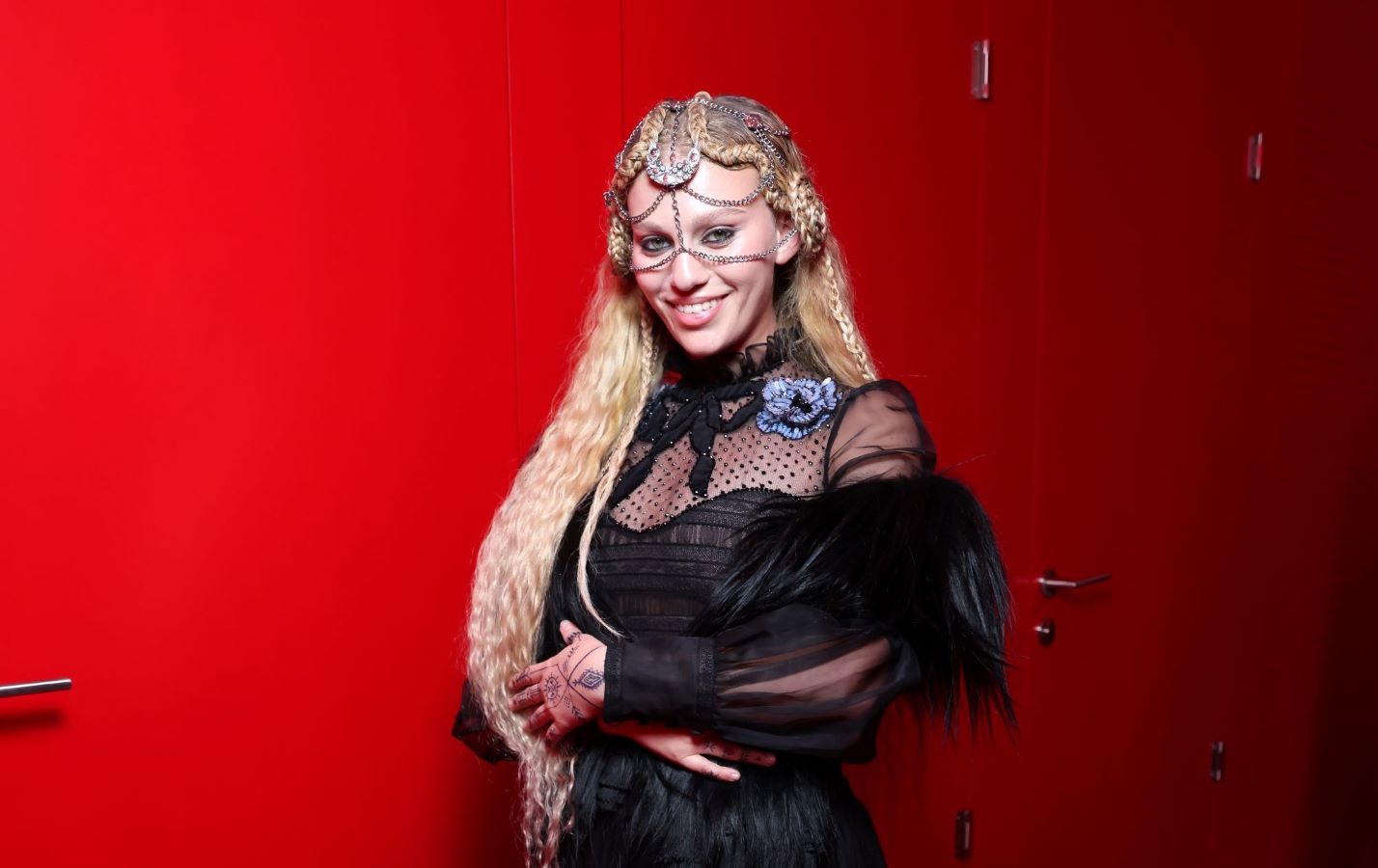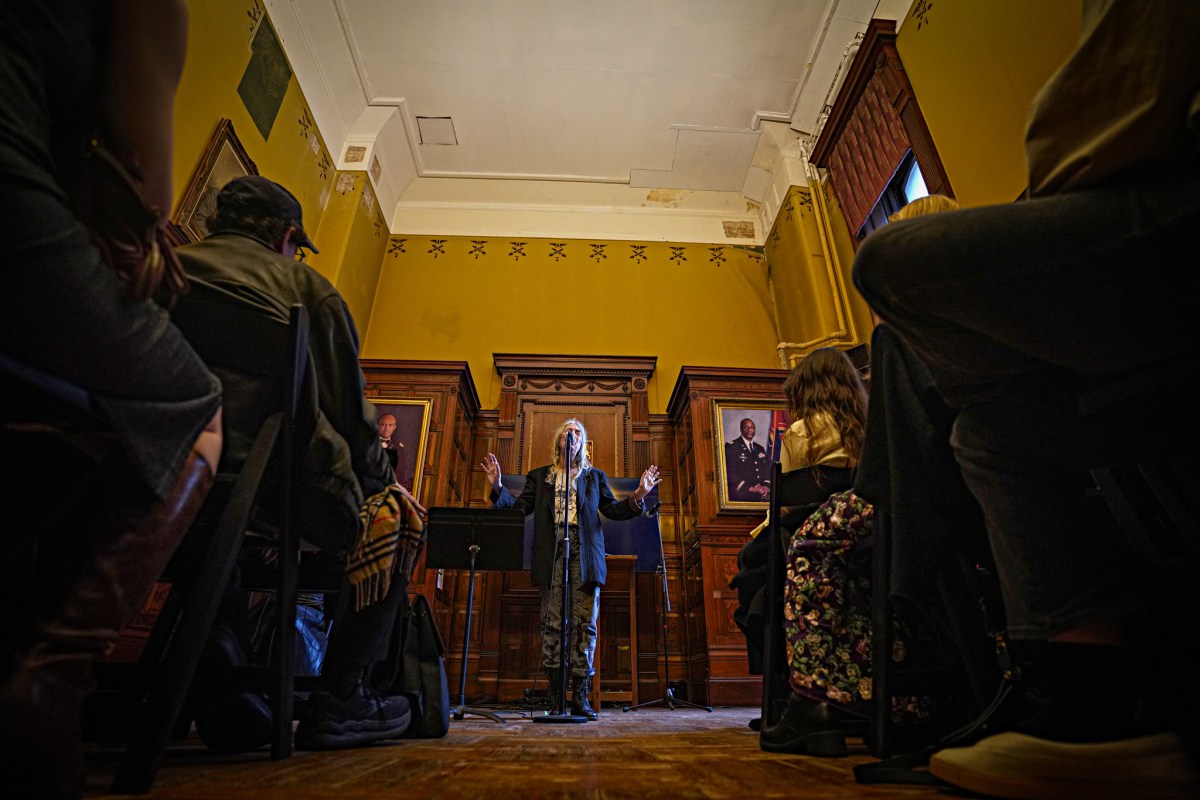Good art scares bad people. Artist Faith Ringgold at a press preview of her exhibition, “American People, Black Light: Faith Ringgold’s Paintings of the 1960s” at the National Museum of Women in the Arts on June 19, 2013. AP Photo/Jacquelyn Martin, File It’s tempting to look at 2025 society where seemingly unmovable ignorance and thuggish authoritarianism rule and see art as ineffectual, even pointless.
When one side has the guns and three branches of government and the other can offer only movie cameras and paint as resistance, it’s easy to throw up your hands. “Paint Me a Road Out of Here,’ the documentary by Catherine Gund playing on Sunday at Space in Portland, feels like it was engineered to rebut that idea, and this specific moment in American history. The story behind the 2024 film is a harrowing, ultimately uplifting tale of art triumphing over the most wretched and oppressive circumstances.

Not that it was easy. The film centers on a painting by acclaimed artist Faith Ringgold who, in 1971, created the mural, “For the Women’s House” to be displayed at New York’s Rikers Island women’s jail. The vibrant painting depicts women excelling in a variety of professional roles (most of which were unlikely for women in the ’70s), the confident visions designed to contrast with the prison’s designed message of hopelessness and despair.
At least, until the masterpiece disappeared. A curious female guard inquired and was rebuffed until it was discovered that Ringgold’s painting had been painted over and forgotten. Whitewashed, if you will.
I’ll draw connections here to recent stories of, say, the mural depicting the “core values” of the FBI (itself a questionable concept) being painted over at the beginning of this year. And while the FBI mural wasn’t a priceless art treasure (Ringgold’s painting is valued in the millions), the photo of someone with a paint roller eliminating the words “fairness,” “diversity,” and “integrity” from the FBI training academy at the order of a person who campaigned on eliminating all recognition of America’s long history of bigotry and injustice is its own sort of powerful metaphor. As “Paint Me a Road Out of Here” explores, institutional indifference may have led to Ringgold’s painting being blanked out, but there too, the underlying message rings through the film.
A Black woman’s powerful message of hope and self-worth lovingly created on the wall of one of the most dehumanizing places in the country being slathered with white paint and consigned to obscurity — I mean, again the metaphors are not subtle. For Ringgold and the other women artists (some of whom were inspired by “For the Women’s House” while incarcerated there), the quest to find, restore and ultimately liberate this historic painting couldn’t be more important, or personal. As present-day Ringgold tells an audience in the film, “young, young, young women were going to prison.
One girl said, ‘I want to see a road leading out of here.’” As the passionate former inmates assisting in this movie mission of artistic liberation show, that’s exactly what Faith Ringgold did. Art inspires as it exposes.
There are always films playing around Maine that can do just that — if you seek them out. In addition to Gund’s film at Space, the Colonial Theater in Belfast is the latest Maine indie movie house to book “No Other Land,” the Oscar-winning documentary about the destruction in Gaza that — for some reason — hasn’t received American distribution. Maine filmmaker Richard Kane’s documentary about the state’s homelessness problem, “Building Hope: Ending Homelessness in Maine” is playing on Thursday at the Maine Film Center in Waterville .
To jump back to the real-world track, the war on such art is very real in America. The Trump administration’s attack on what it terms “DEI” (which sounds, coming from officials’ mouths, like the slur it’s intended as) has seen theaters threatened with closure for showing controversial films, school districts pressured to pull books on subjects related to equality and diversity, and an attempted shutdown of both PBS and NPR for what it terms “liberal bias.” The Smithsonian, the Kennedy Center, even the National Zoo have all faced funding cuts and pressures for daring to present art (and, I guess, penguins) that challenges the bigoted message Trump’s administration is built on.
(One GOP-led Florida bill gives the whole game away, proposing a blanket ban on any teaching that would make white people feel “discomfort, guilt, anguish, or any other form of psychological distress on account of his or her race.”) “Paint Me a Road Out of Here,” “No Other Land,” and other films and artworks are designed to make people feel uncomfortable by confronting viewers with the truth. If the truth makes viewers feel uncomfortable, it moves them to examine why and, best case scenario, to change.
To reiterate (again because the metaphor is impossible to ignore), whitewashing art because its message upsets an official narrative that is itself unjust only proves how powerful truth in art actually is. And seeking out and watching such art is our power as moviegoers. In a country where state-ordered censorship of “uncomfortable” truths is the lifeblood of the regime in charge, experiencing great art is an act of resistance.
Can a single film (or painting) stop the encroaching tide of oppression? The impulse is to scoff that, of course it can’t. But as the women depicted in “Paint Me a Road Out of Here” show, experiencing powerful truth through art can create a powerful cumulative effect for the greater good. Even if it takes a long time and a hard fight.
If you go “Paint Me a Road Out of Here” screens at Space at 2 p.m. Sunday.
Tickets are $10/$7 for Space members. At the PMA, Oscar-winning ‘No Other Land’ shows the power of art in angry times Comments are not available on this story. Read more about why we allow commenting on some stories and not on others.
We believe it’s important to offer commenting on certain stories as a benefit to our readers. At its best, our comments sections can be a productive platform for readers to engage with our journalism, offer thoughts on coverage and issues, and drive conversation in a respectful, solutions-based way. It’s a form of open discourse that can be useful to our community, public officials, journalists and others.
We do not enable comments on everything — exceptions include most crime stories, and coverage involving personal tragedy or sensitive issues that invite personal attacks instead of thoughtful discussion. You can read more here about our commenting policy and terms of use . More information is also found on our FAQs .
Show less Send questions/comments to the editors..
Entertainment

In the documentary ‘Paint Me a Road Out of Here,’ art exposes hope in a hopeless place

A painting by artist Faith Ringgold, 'For the Women’s House' was displayed at New York’s Rikers Island women’s jail. Until it disappeared.















